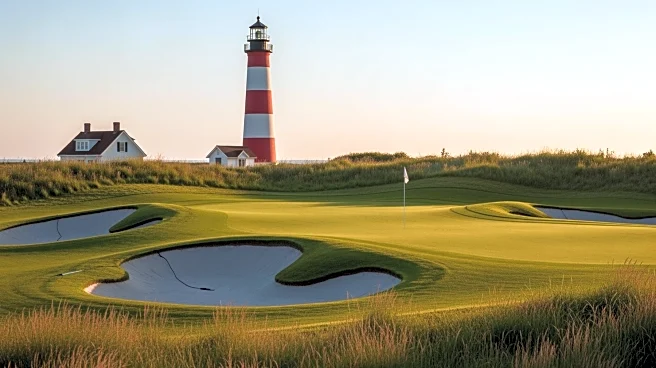What's Happening?
Davis Love III, a renowned golfer and course designer, has completed a restoration of the Harbour Town Golf Links in Hilton Head Island, South Carolina. The course, originally designed by Pete Dye, underwent
changes to restore its original design while upgrading infrastructure. Love worked alongside Allan MacCurrach and Jon Wright to ensure the course maintained its unique character, known for its overhanging trees and coastal vibe. The restoration included minor changes such as re-expanding greens, tweaking bunkers, and reshaping the pond on the fifth hole. The course reopened on November 11, following the PGA Tour's RBC Heritage event.
Why It's Important?
The restoration of Harbour Town Golf Links is significant for the golfing community, preserving a course that ranks among the top 30 public-access layouts in the United States. By maintaining the original design intentions, the project honors Pete Dye's legacy, a pivotal figure in golf architecture. The course's enhancements ensure it remains a challenging and iconic venue for both professional tournaments and recreational play. This restoration supports the local economy by attracting tourists and golf enthusiasts to Sea Pines Resort, contributing to Hilton Head Island's reputation as a premier golfing destination.
What's Next?
With the restoration complete, Harbour Town Golf Links is expected to continue hosting major golf events, including the PGA Tour's RBC Heritage. The course's upgrades may attract more visitors, boosting local tourism and economic activity. Golfers and resort guests will experience the improved infrastructure and design, potentially leading to increased membership and guest traffic. The restoration may also inspire similar projects at other historic courses, emphasizing the importance of preserving golf's architectural heritage.
Beyond the Headlines
The restoration of Harbour Town Golf Links highlights the ethical considerations in maintaining historical sports venues. By preserving the original design, the project respects the cultural significance of Pete Dye's work and the course's role in golf history. The use of artificial turf in revetted bunkers reflects a balance between tradition and modern maintenance practices, ensuring sustainability while honoring past designs. This approach may influence future restorations, promoting a blend of historical fidelity and practical innovation.













